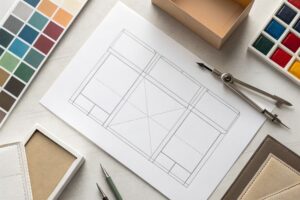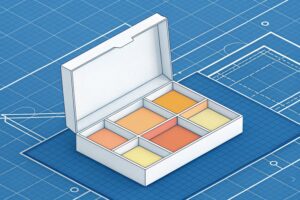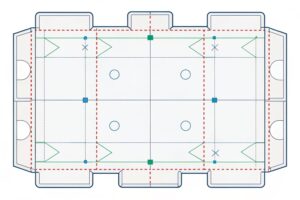Retail displays lose impact fast. Shoppers tune them out. I need a clear rhythm that keeps interest high and costs low. I use a cycle that teams can follow.
Change feature displays every 4–8 weeks. Refresh small elements weekly. Swap window displays monthly or by season. Replace promotion displays at campaign end or when sell-through stalls. Use testing and costs to fine-tune cadence by store.

I will break down the most common cadences, why they work, and how to execute them well. I will also share lessons from factory floors and store installs.
How often are window displays changed?
A window is a silent salesperson. A stale window hurts traffic. I plan a steady swap that follows seasons, campaigns, and local events. I set a simple, repeatable schedule.
Most retailers change window displays every 4–6 weeks, with quick refreshes weekly. Seasonal anchors change quarterly. High-traffic flagships may change every 2–3 weeks to match campaigns, product drops, or local events.

Pick a cadence that fits your store
Window timing depends on traffic, seasonality, and team capacity. Grocery windows swing with weekly offers. Fashion windows follow collections. Specialty stores ride launches. I build a 12-month calendar first. I lock the seasonal anchors1. I fill gaps with short campaigns.
| Retail Type | Typical Window Cadence | Notes |
|---|---|---|
| Fashion/Apparel | 4–6 weeks | Tie to drops, size curve, and key looks. Add quick prop swaps weekly. |
| Beauty/Personal Care | 4–8 weeks | Align with hero SKUs and gift sets. Watch tester stock. |
| Electronics | 6–8 weeks | Time to launches and pre-orders. Keep spec cards up to date. |
| Grocery/Pharmacy | 2–4 weeks | Weekly promos drive inserts. Keep price points clear and large. |
| Outdoor/Sporting | 4–6 weeks | Follow hunting/fishing seasons and local events. |
Use clear triggers, not guesswork
I change a window early if traffic drops, sell-through slows, or props look tired. I watch weather, holidays, and delivery dates. I keep backup graphics at the store for quick swaps. I plan flat-pack kits that one associate can install in under 45 minutes.
Control cost and waste
I prefer corrugated and paperboard props. They print fast and ship flat. They are easy to recycle. I use digital print for short runs, and I reuse hardware. I avoid heavy plastics unless needed for safety. I design modules that rotate across stores to extend life.
Why is it important to maintain displays?
A great display fails if it looks messy. Dust, tears, and empty pegs kill trust. I treat maintenance as a sales habit, not a chore. I schedule it.
Good maintenance protects sales, brand, and safety. Clean, stocked, and aligned displays lift conversion, cut returns, prevent damage, and extend display life. Small daily fixes beat costly full resets later.

What happens if I skip it?
I have seen strong programs fade because no one owned upkeep. One outdoor launch looked bold on day one. Two weeks later, edges frayed and color bands faded under harsh lights. Conversion fell. We fixed it with matte lamination, edge guards, and a daily wipe plan. Sales recovered. The lesson is simple. Care is part of the offer.
| Issue | Cost if Ignored | Simple Fix |
|---|---|---|
| Dust and scuffs | Lower trust, fewer touches | Daily microfiber wipe; matte coatings on high-touch |
| Empty facings | Lost sales, poor forecasts | Back-stock plan; “one-in, one-out” rule |
| Crooked graphics | Brand damage, confused shoppers | Bubble-free liners; squeegee and corner tabs |
| Weak structure | Safety risk, broken stock | Load tests; thicker E-flute or double-wall as needed |
| Color drift | Returns and complaints | Color targets; digital proof; same press for reprints |
| Torn edges | Shorter display life | Edge wraps; die-cut radius; reinforced folds |
Build a light, daily routine
I keep a five-minute checklist at opening and close: straighten headers, face products, remove trash, check price labels, and restock top sellers. I train one owner per bay. I add a weekly deeper pass for screws, clips, and wobblers. I log issues with photos so we see trends.
Design for long life from day one
In my factory, I run load tests2 and transport tests on every new floor unit. I use water-based inks and strong liners. I choose corrugated grades that match the SKU weight, not a guess. I mark every kit with a simple assembly map. I print QR codes that link to a 60-second build video. Teams move faster and make fewer mistakes.
What is it called when you set up displays in stores?
Many teams use different words for the same job. That causes confusion and delays. I keep the language simple and consistent across briefs and POs.
We call the setup “visual merchandising.” The work inside stores is “retail execution” or a “merchandising reset.” Following the shelf map is “planogram implementation.” The full process is “display installation.”
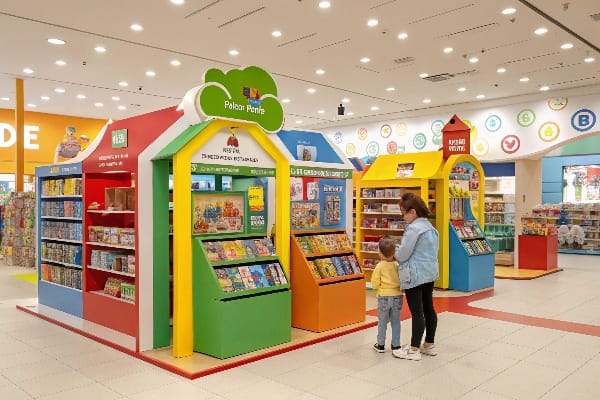
Speak the same language
Clear terms save time and money. Here is how I define the common ones with buyers, field teams, and our factory. I put these on the first page of every brief to avoid misreads and rework.
| Term | Meaning | Who Uses It |
|---|---|---|
| Visual Merchandising3 | The strategy and design of how products look in store | Marketing, VM, Design |
| Planogram (POG) | A shelf map that shows exact product placement | Category, Buyers, Store Ops |
| Retail Execution4 | The act of installing and auditing in store | Field Teams, Brokers |
| Merchandising Reset | A scheduled change to layout or fixtures | Store Ops, Vendors |
| Display Installation | Building and placing POP/PDQ/floor stands | Store Staff, Vendors |
| Fixture Set | The hardware, shelves, and brackets | Store Planning, Vendors |
Follow a simple install flow
I ship flat-pack corrugated kits with a printed map, a QR video, and labeled bags. I match barcodes on the display to SKUs. I pre-apply double-sided tape and add spare feet and clips. I design to a single-person build where possible. Most units take 15–30 minutes. This saves labor. It also reduces damage.
Tie factory work to store reality
My team in Shenzhen runs three lines. We print, mount, cut, test, and pack in one flow. We make samples fast and tweak until proofed. We use digital print for small runs and seasonal art. We switch to flexo or offset for long runs to cut unit cost. We mark all cartons with store numbers and wave dates. The store teams get what they expect, on time, in sequence.
Do window displays increase sales?
Yes. A good window draws eyes and feet. A weak window wastes rent. I treat the window as a campaign. It must connect to stock and an easy path inside.
Strong windows lift footfall and conversion when they match real stock, lead to a clear in-store offer, and link to simple wayfinding. Impact varies by category, location, and timing. Measure and adjust.
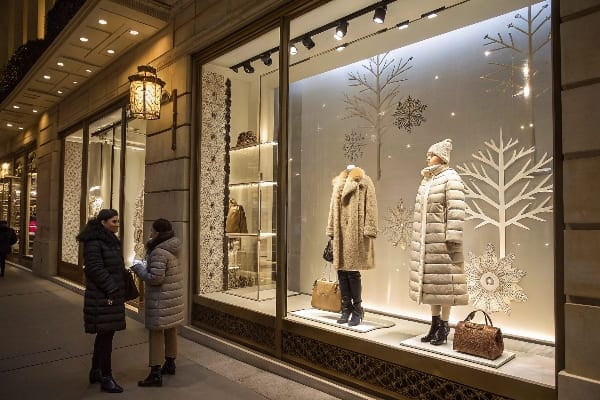
How a window sells
A window wins attention first. It signals value, newness, or status. It frames a simple story. It sets a promise that the store must keep. I use big product, one idea, and one call to action. I avoid clutter. I use corrugated props for speed and cost. I size type for a three-second read from across the street. I match the same hero inside the door on a floor stand or table. Shoppers see the window, step in, and land at the product fast.
| Metric | What It Shows | How I Track |
|---|---|---|
| Door Count | Footfall from the street | Camera or counter at entrance |
| Conversion Rate5 | Visits that buy | POS vs door count |
| Average Ticket | Trade-up success | POS |
| Sell-Through | Speed by SKU | Daily on-hand and sales |
| Engagement Time | Stop rate at window | Short manual counts or simple sensors |
Prove it with simple tests
I run A/B windows6 across matched weeks. I hold price and stock constant. I change one variable: headline, color, or hero SKU. I compare door counts and conversion. I keep the winner. I also test materials. For one outdoor launch in fall, we used a corrugated antler motif and a matte black floor stand by the entrance. The window drew hunters in. The stand closed the sale with clear spec cards and a safe demo zone. Footfall and unit sales rose. The display shipped flat, built in 20 minutes, and recycled clean at season end. The math worked for both sales and sustainability.
Conclusion
A steady 4–8 week refresh, weekly touch-ups, and clear install language keep displays fresh, protect brand, and support sales without waste or rush costs. I keep testing and I keep it simple.
Exploring seasonal anchors can help you create a robust retail calendar, maximizing sales during peak times. ↩
Discover the significance of load tests in ensuring safety and durability for retail displays. ↩
Understanding Visual Merchandising can enhance your retail strategy, improving customer engagement and sales. ↩
Exploring Retail Execution will provide insights into effective in-store strategies that drive sales and operational efficiency. ↩
Understanding how to enhance your conversion rate can significantly boost sales and optimize your retail strategy. ↩
Exploring A/B testing strategies can help you refine your marketing approach and maximize customer engagement. ↩


